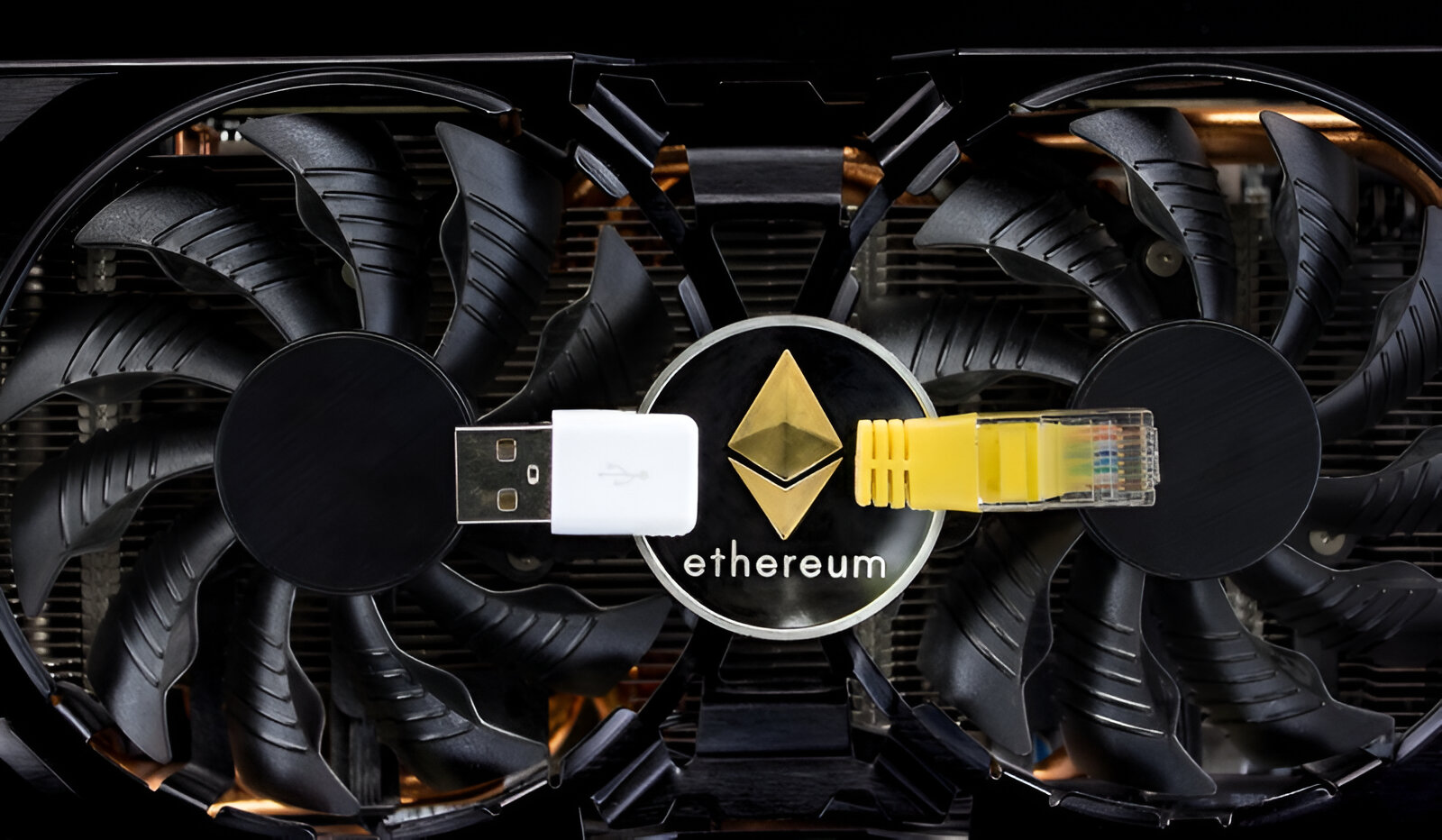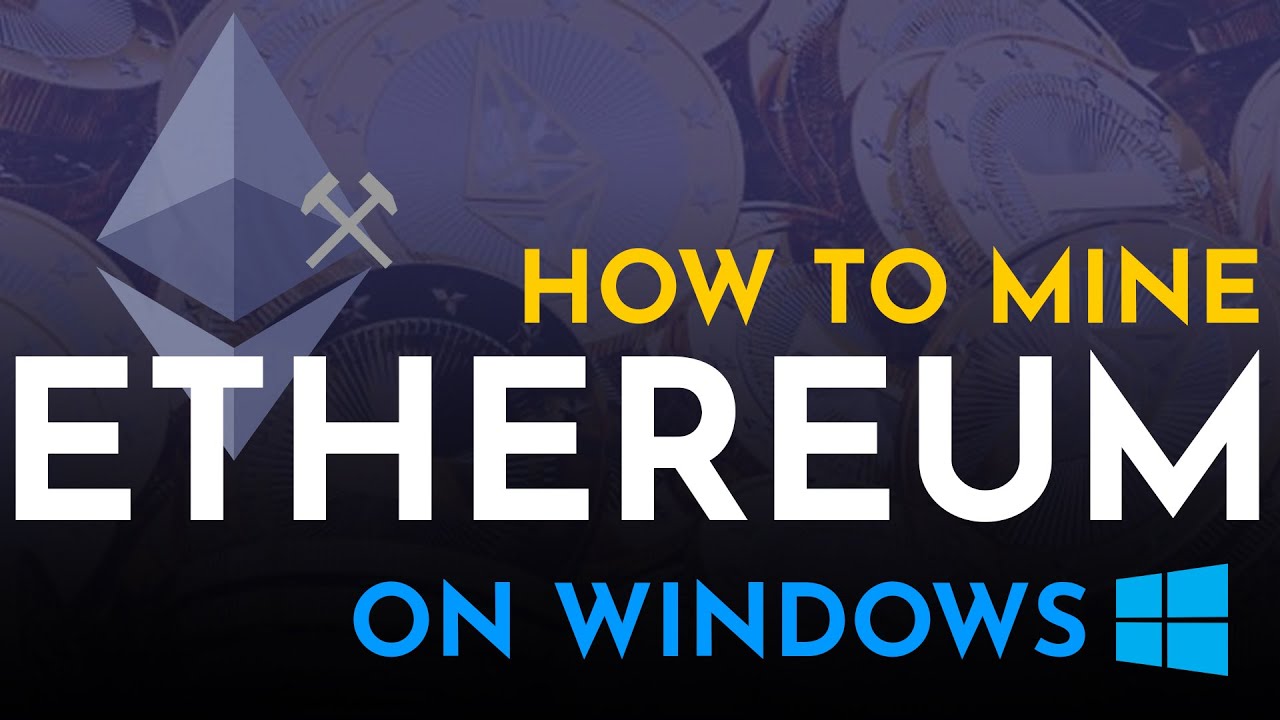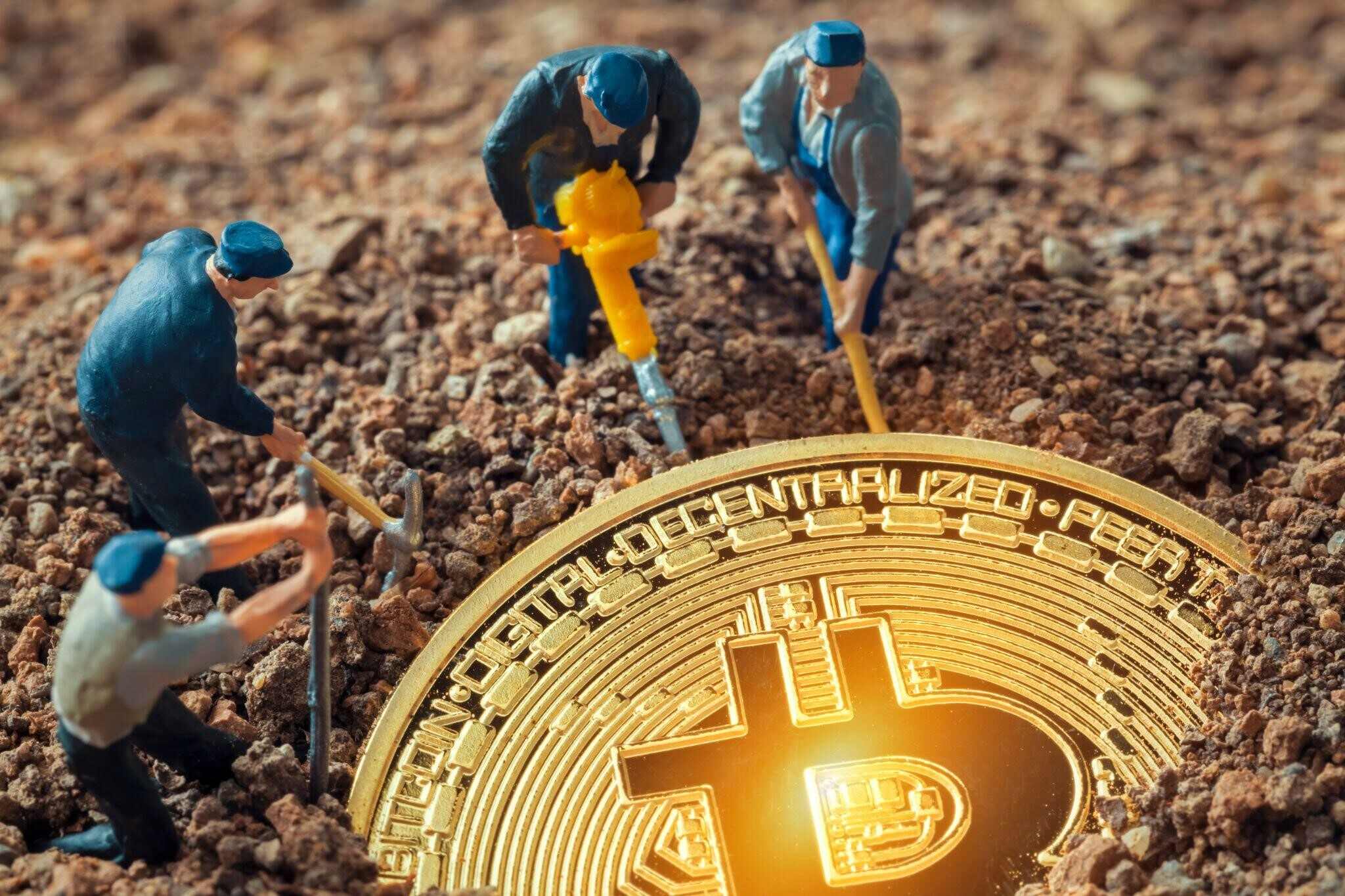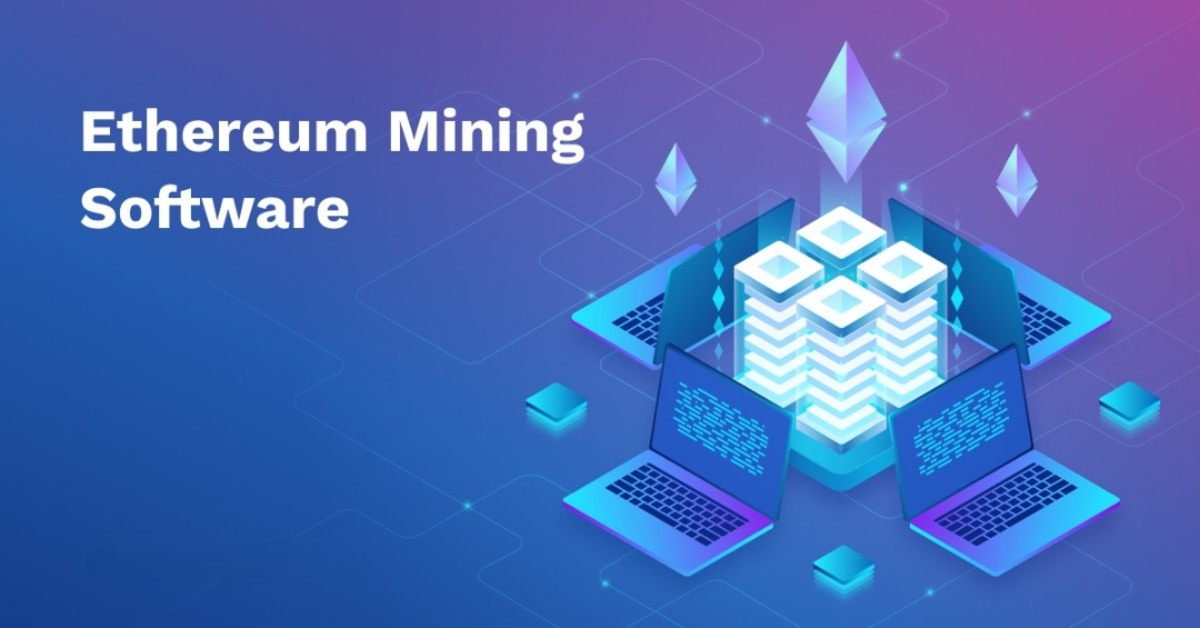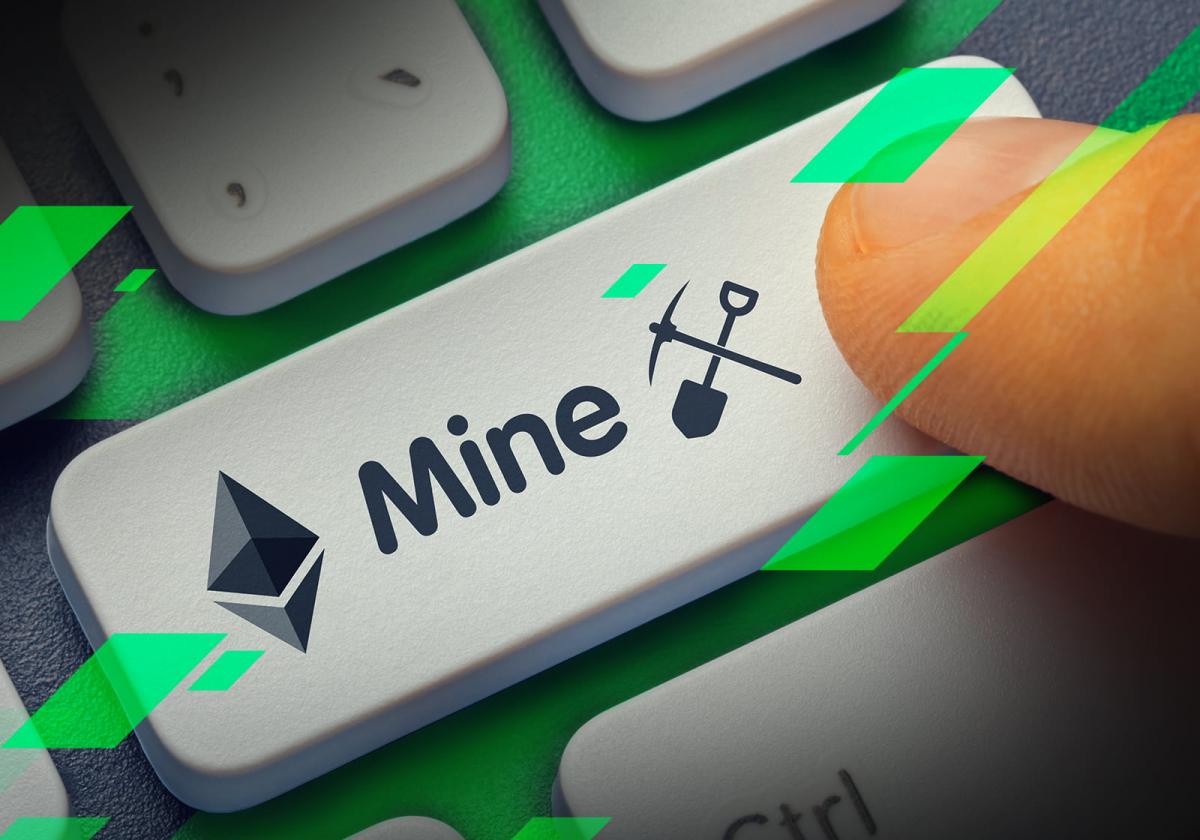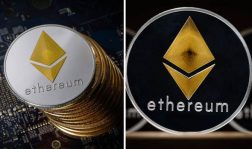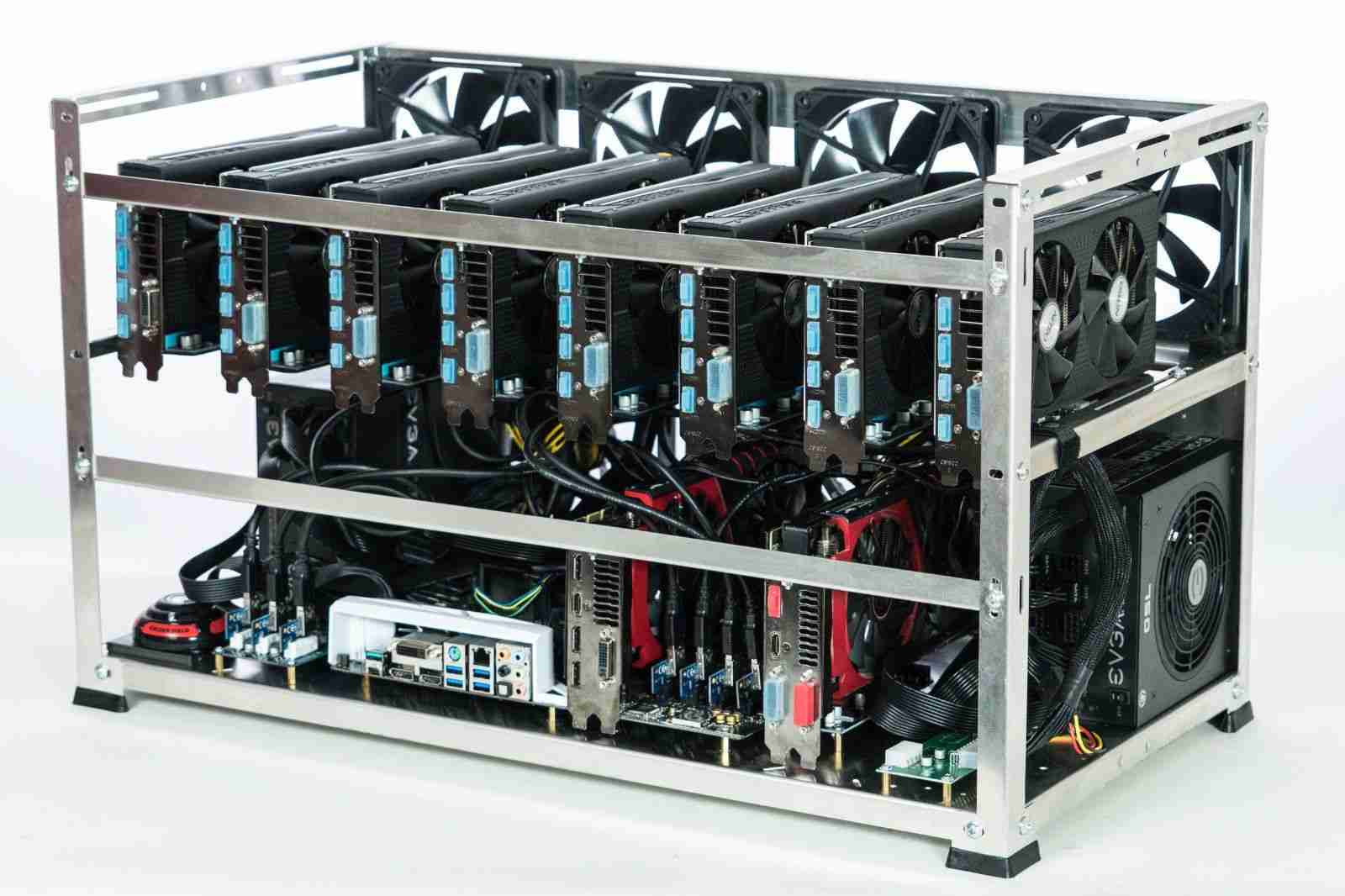Introduction
Welcome to the world of Ethereum mining! If you’re new to the concept of mining or just want to learn more about mining Ethereum, you’ve come to the right place. In this article, we will explore the basics of Ethereum mining, including what Ethereum is, what mining entails, and how you can get started with mining Ethereum.
Ethereum is a decentralized, open-source blockchain platform that allows developers to build and deploy smart contracts and decentralized applications (DApps). It was created by Vitalik Buterin in 2015 and has gained significant popularity and traction since then. Unlike traditional cryptocurrencies like Bitcoin, Ethereum’s focus is not solely on facilitating digital transactions, but also on providing a powerful platform for creating decentralized applications.
So, what exactly is mining? Mining is the process of validating and adding new transactions to the blockchain. In simple terms, miners use their computational power to solve complex mathematical problems that verify the authenticity and validity of transactions. This process not only secures the network but also rewards miners with newly created Ethereum tokens as an incentive for their work.
Ethereum mining works on a Proof of Work (PoW) consensus algorithm, which means that miners must compete to find the correct solution to a mathematical problem in order to add a new block to the blockchain. The first miner to solve the problem and validate the block is rewarded with a certain number of Ether. This process ensures the security and integrity of the Ethereum network.
Now that you have a basic understanding of what Ethereum is and how mining works, let’s take a look at the hardware requirements for mining Ethereum. It’s important to note that while mining can be profitable, it does require a certain level of investment in hardware and electricity costs. However, with the right equipment and setup, you can potentially earn a significant amount of Ether.
What is Ethereum?
Ethereum is a decentralized blockchain platform that enables the development of smart contracts and decentralized applications (DApps). It was proposed by Vitalik Buterin in 2013 and officially launched in 2015. While Bitcoin pioneered the concept of blockchain technology as a digital currency, Ethereum expanded upon it by allowing developers to create and execute programmable contracts.
At its core, Ethereum is a global, open-source platform that utilizes blockchain technology to enable peer-to-peer transactions, without the need for intermediaries such as banks or governments. Transactions on the Ethereum network are recorded on a public ledger, known as the blockchain, which is maintained and verified by a network of computers known as nodes.
The key innovation that Ethereum brought to the table is the concept of smart contracts. These are self-executing contracts with the terms of the agreement directly written into code. Smart contracts enable transactions to be carried out automatically when certain predefined conditions are met, eliminating the need for intermediaries and providing a more efficient and secure method of conducting business.
Additionally, Ethereum allows developers to build decentralized applications (DApps) on its platform. These applications are not controlled by any single entity and operate on the principles of transparency, immutability, and decentralization. DApps can range from decentralized finance (DeFi) applications to gaming, social networks, supply chain management, and more.
One of the key features of Ethereum is its native cryptocurrency, Ether (ETH). Ether is used as both a medium of exchange, similar to Bitcoin, and as fuel to power the execution of smart contracts and transactions on the network. Users can also leverage Ether for staking and participating in the platform’s upcoming upgrade to Ethereum 2.0, which aims to enhance scalability and sustainability.
Overall, Ethereum has revolutionized the blockchain industry by providing a powerful platform for developers to create decentralized applications and smart contracts. Its open and permissionless nature makes it highly accessible to anyone with an internet connection, and its expanding ecosystem continues to drive innovation and adoption in the world of blockchain technology.
What is mining?
Mining is a crucial process in the world of cryptocurrencies, including Ethereum. It involves the validation and verification of transactions on the blockchain and plays a vital role in maintaining the security and integrity of the network. In essence, mining is the process of adding new blocks to the blockchain.
When a transaction is initiated on the Ethereum network, it needs to be validated and added to a block. Miners, using their computational power, compete to solve complex mathematical problems that validate the transaction and add it to a block. This process ensures that the transaction is legitimate and prevents double-spending, where the same amount of cryptocurrency is spent more than once.
Ethereum mining operates on a Proof of Work (PoW) consensus algorithm, which means that miners must find the correct solution to a mathematical problem in order to add a new block to the blockchain. The mathematical problem is computationally intense and requires significant computational power to solve. Miners utilize specialized hardware, typically graphics processing units (GPUs), to perform the necessary calculations.
Once a miner solves the mathematical problem and validates the block, it is added to the blockchain, and the miner is rewarded with a certain amount of newly minted Ether as a reward. This acts as an incentive for miners to continue validating transactions and securing the network.
Mining also plays a crucial role in the governance of the Ethereum network. Miners have the ability to vote on proposed changes or upgrades to the protocol, ensuring that decisions regarding the future direction of Ethereum are made in a decentralized manner.
It’s important to note that mining Ethereum requires a significant investment in hardware, electricity, and cooling to be profitable. As the Ethereum network grows, the computational power required to solve the mathematical problems also increases. Mining pools, where miners combine their resources and share the rewards, have become popular as they allow for a more consistent and predictable income stream.
In summary, mining is the process of validating and adding new transactions to the Ethereum blockchain. It ensures the security and integrity of the network while providing incentives for miners to participate. While it requires substantial investments, mining Ethereum can be a profitable venture for those with the right equipment and resources.
How does Ethereum mining work?
Ethereum mining is a complex process that involves validating and adding new blocks to the Ethereum blockchain. It operates on a Proof of Work (PoW) consensus algorithm, which requires miners to solve complex mathematical problems in order to earn rewards. Here’s a step-by-step breakdown of how Ethereum mining works:
- Transactions: Users initiate transactions on the Ethereum network, such as sending Ether to another user or executing a smart contract.
- Transaction validation: Miners collect these transactions and place them into a block. They then compete to solve a mathematical problem, known as a cryptographic hash function. This problem requires significant computational power and serves as a barrier to prevent spam and ensure the legitimacy of transactions.
- Proof of Work: Miners continuously try different combinations of inputs to find a solution to the mathematical problem. The first miner to find the correct solution broadcasts it to the network, proving that they have done the necessary computational work.
- Adding the block: Once a miner finds the solution, they add the block of validated transactions to the Ethereum blockchain. This block includes the solution to the cryptographic problem and a reference to the previous block, forming a chain of blocks.
- Block reward: As a reward for their computational work and securing the network, the miner who successfully adds the block to the blockchain is granted a certain amount of newly minted Ether. The specific amount of rewards decreases over time as per the Ethereum protocol.
- Confirmation: Other miners within the network verify the solution and the block of transactions. If the solution is correct and the block is valid, it is permanently added to the blockchain, and the transactions are considered confirmed.
Ethereum mining is a competitive process, as multiple miners are working simultaneously to solve the mathematical problem. This competition is what ensures the security and integrity of the Ethereum network. It also creates an incentive for miners to invest in high-performance hardware and compete for the block rewards.
It’s worth mentioning that Ethereum is in the process of transitioning from a Proof of Work (PoW) to a Proof of Stake (PoS) consensus algorithm, known as Ethereum 2.0. With Ethereum 2.0, mining will be replaced by a new mechanism called staking, where participants lock up a certain amount of Ether to help validate transactions and secure the network. This transition aims to improve scalability, energy efficiency, and reduce the reliance on computational power.
In summary, Ethereum mining involves validating and adding new blocks to the blockchain by solving complex mathematical problems. Miners compete to find the correct solution and are rewarded with newly minted Ether. This process ensures the security, decentralization, and integrity of the Ethereum network.
Hardware requirements for mining Ethereum
Mining Ethereum requires specialized hardware that can handle the computational demands of solving complex mathematical problems. The following are the key hardware components and requirements for mining Ethereum:
- Graphics Processing Units (GPUs): The primary component for Ethereum mining is a powerful GPU. Ethereum mining relies heavily on parallel processing, making GPUs more efficient than other hardware options. AMD and Nvidia GPUs are commonly used for mining Ethereum, with models such as the Radeon RX 5700 XT and the GeForce RTX 3070 providing excellent performance.
- Central Processing Unit (CPU): While the CPU is not as critical for Ethereum mining as the GPU, it is still required to manage system operations. A mid-range or higher processor, such as an Intel Core i5 or AMD Ryzen 5, is sufficient for most mining setups.
- Memory (RAM): Sufficient RAM is essential for smooth mining operations. A minimum of 8GB of RAM is recommended, but having 16GB or more can provide better stability and performance when running multiple mining software and managing large datasets.
- Power Supply Unit (PSU): A reliable and high-wattage power supply is crucial for mining rigs. The GPU and other components consume a significant amount of power, so choosing a PSU with enough power output, typically 750W or higher, is important to ensure stable operations.
- Storage: While not directly related to mining performance, having sufficient storage is necessary for the operating system, mining software, and storing the blockchain. A solid-state drive (SSD) with a capacity of at least 256GB is recommended to ensure fast boot times and efficient data access.
- Motherboard: When selecting a motherboard for Ethereum mining, ensure that it has enough PCIe slots to accommodate multiple GPUs. It’s also essential to choose a motherboard that supports your CPU and offers stability and reliability in prolonged mining operations.
- Cooling: Mining generates a significant amount of heat, so proper cooling is crucial for maintaining optimal performance and prolonging the lifespan of the components. Consider investing in ample cooling solutions, such as multiple fans or liquid cooling, to keep the temperatures under control.
It’s important to note that the hardware requirements for Ethereum mining may vary depending on various factors, including the mining algorithm, mining software, and individual preferences. Additionally, the Ethereum network’s difficulty level and the number of miners can also impact the mining efficiency and profitability.
Before investing in mining hardware, it’s crucial to perform thorough research, calculate the potential profitability, and consider factors such as electricity costs and the current market conditions. Consulting mining communities and forums can provide valuable insights and recommendations based on real-world experiences.
In summary, successful Ethereum mining requires a powerful GPU, sufficient RAM, a reliable PSU, ample storage, a compatible motherboard, and proper cooling solutions. By selecting and configuring the right hardware components, miners can optimize their mining operations and increase the chances of earning rewards in the form of newly minted Ether.
Step-by-step guide to mining Ethereum
If you’re interested in mining Ethereum, here’s a step-by-step guide to help you get started:
- Set up a digital wallet: Before you start mining Ethereum, you’ll need a digital wallet to store your mined Ether. There are various types of wallets available, including hardware wallets, software wallets, and online wallets. Choose a wallet that suits your needs and ensure that it supports Ethereum.
- Choose mining hardware: Select the mining hardware that meets your budget and requirements. As mentioned earlier, powerful GPUs are commonly used for Ethereum mining due to their parallel processing capabilities. Ensure that your hardware is compatible with mining software and is capable of handling the computational demands of mining.
- Install mining software: Download and install mining software that is compatible with your hardware. Popular mining software for Ethereum includes Claymore’s Miner, PhoenixMiner, and Ethminer. These programs allow you to connect to the Ethereum network and start mining.
- Join a mining pool: While solo mining is an option, joining a mining pool can provide more consistent rewards. Mining pools are communities of miners who combine their computing power to increase the chances of solving blocks and earning rewards. Research and choose a reputable mining pool that suits your needs and offers competitive fees and a fair distribution system.
- Configure mining software: Set up your mining software by entering the necessary information, including your mining pool’s URL, your wallet address, and other relevant details. Each mining software has its own configuration parameters, so refer to the software’s documentation or the mining pool’s instructions for guidance.
- Start mining: Execute your mining software and let it connect to the mining pool. The software will begin mining Ethereum using your hardware’s processing power. Monitor the mining process to ensure everything is running smoothly and troubleshoot any issues that may arise.
- Monitor and optimize: Keep an eye on your mining operation’s performance, including your hash rate, shares submitted, and rewards earned. Adjust your hardware settings, such as fan speeds or overclocking, if necessary, to optimize performance. Regularly update your mining software and stay informed about any network updates or changes that may require adjustments to your mining setup.
It’s important to note that mining Ethereum involves electricity costs, hardware investments, and maintenance. Conduct thorough research, calculate the potential profitability, and consider factors such as electricity rates, hardware prices, and market conditions before diving into mining. Stay updated with the latest developments in Ethereum mining and network upgrades, as these can impact mining efficiency and profitability.
By following this step-by-step guide and staying informed about the latest mining trends and best practices, you can start mining Ethereum and potentially earn rewards for your participation in securing the Ethereum network.
Setting up a digital wallet
Before you can start mining Ethereum, you’ll need to set up a digital wallet to securely store your mined Ether. A digital wallet is a software application that allows you to interact with the Ethereum blockchain and manage your cryptocurrency holdings. Here’s a step-by-step guide to help you set up a digital wallet:
- Choose a wallet type: There are several types of digital wallets available, each offering varying levels of security and convenience. Hardware wallets, such as Ledger and Trezor, are considered the most secure as they store your private keys offline. Software wallets, like Exodus and MyEtherWallet, are installed on your computer or mobile device. Online wallets, such as MetaMask and Trust Wallet, are accessed through a web browser or mobile app.
- Download and install: Once you’ve chosen a wallet type, visit the official website or app store to download and install the wallet software. Ensure that you download from a trusted source to avoid any potential security risks.
- Create a new wallet: Open the wallet software and follow the instructions to create a new wallet. This typically involves setting a strong password or passphrase to protect your wallet. Generate and securely store a backup phrase provided by the wallet software. This backup phrase is essential for recovering your wallet if you lose access to your device or forget your password.
- Secure your wallet: Take additional security precautions to protect your wallet. Enable two-factor authentication (2FA) if available, which adds an extra layer of security by requiring a verification code in addition to your password. Regularly update your wallet software to benefit from the latest security features and patches.
- Obtain your wallet address: Once your wallet is set up and secured, you will be assigned a unique wallet address. This address is a long alphanumeric string and acts as your public identifier on the Ethereum network. You will need this address to receive Ether when mining.
- Backup your wallet: As an additional security measure, regularly back up your wallet. This can be done by exporting your wallet’s private keys or seed phrase to an external storage device, such as a USB drive or paper. Keep your backup in a secure location, away from prying eyes and potential threats.
- Test your wallet: Before you start mining and receiving Ether, it’s a good idea to test your wallet by sending a small amount of Ether to your wallet address. This ensures that your wallet is functioning correctly and that you have access to your funds.
It’s important to note that each wallet has its own unique features and user interface, so familiarize yourself with the specific functionalities and options offered by your chosen wallet. Explore the wallet’s settings, such as gas fees and transaction confirmation options, to optimize your Ethereum experience.
Remember to keep your wallet software up to date and stay vigilant against potential phishing attempts or malware. Be cautious when sharing your wallet address and only use wallets from reputable sources to mitigate security risks.
By following these steps and securely setting up your digital wallet, you’ll be ready to receive and manage the Ether you mine during your Ethereum mining journey.
Installing mining software
Once you have set up your digital wallet, the next step in mining Ethereum is to install the appropriate mining software on your mining rig. Mining software allows your hardware to connect to the Ethereum network and participate in the mining process. Here’s a step-by-step guide to help you install mining software:
- Select suitable mining software: There are various mining software options available for Ethereum mining, each with its own features and compatibility with different hardware configurations. Some popular choices include Claymore’s Miner, PhoenixMiner, and Ethminer. Research and choose the mining software that best fits your hardware and personal preferences.
- Download the software: Visit the official website or reputable sources to download the mining software of your choice. Ensure that you download from trustworthy sources to avoid malicious software or potential security risks.
- Extract the files: Once the download is complete, extract the files from the downloaded package to a location on your mining rig’s hard drive. This could be a dedicated folder or any location of your choice.
- Set up a configuration file: Most mining software requires you to create a configuration file to customize the settings of your mining operation. The configuration file allows you to specify parameters such as the Ethereum mining pool you want to join, your wallet address, mining intensity, and more. Refer to the documentation or the software’s website for guidance on the specific configuration file format.
- Edit the configuration file: Open the configuration file in a text editor and enter the necessary details according to your preferences. Make sure to input the correct mining pool URL, your wallet address, and any other required information. Save the configuration file once you have entered your settings.
- Start the mining software: Run the mining software executable file or script to start the mining process. The software will read the configuration file and connect your hardware to the Ethereum network. It will begin performing the computations required for mining Ethereum.
- Monitor the mining process: Keep an eye on the mining software’s interface or command line to monitor the progress of your mining operation. You can observe details such as hash rate, shares submitted, and potential rewards. Take note of any error messages or warnings that may require troubleshooting.
- Optimize your mining software: Experiment with different mining software settings to optimize the performance and efficiency of your mining rig. Adjust factors such as intensity, temperature limits, and fan speeds to achieve the best results. Refer to the software’s documentation or online resources for guidance on optimizing specific mining software.
It’s important to remember that mining software and settings may vary depending on your operating system, hardware, and the specific software you choose. Stay updated with the latest versions of your chosen mining software to benefit from improvements, bug fixes, and new features.
By following these steps, you can successfully install mining software on your mining rig and begin the process of mining Ethereum. Remember to regularly monitor your mining operation, adjust settings as necessary, and stay informed about any updates or developments in the mining software ecosystem.
Joining a mining pool
Joining a mining pool is a popular choice for Ethereum miners as it allows them to combine their computing power and increase the chances of earning consistent rewards. When mining individually, it can take a significant amount of time to find a block and receive a reward. Joining a mining pool offers a more predictable income stream. Here’s a step-by-step guide to help you join a mining pool:
- Research and select a mining pool: There are several Ethereum mining pools available, each with its own fee structures, payout methods, and reputation. Research and compare different mining pools based on factors such as reliability, fees, minimum payouts, and the size of the pool’s network. Popular Ethereum mining pools include Ethermine, SparkPool, and F2Pool.
- Create an account: Once you have chosen a mining pool, visit their website and sign up for an account. Provide the necessary information, including your email address and a password. Some mining pools may require additional verification steps to prevent abuse.
- Configure your mining software: Open your Ethereum mining software and edit the configuration file to include the mining pool’s URL, your mining pool username, and any other required information. This ensures that your mining rig connects to the correct pool.
- Set your payout settings: Determine your preferred payout method, such as receiving Ether directly to your wallet or accumulating a certain amount of Ether before a payout. Configure your mining pool account settings to reflect your preferred payout method.
- Join the mining pool: Start your mining software and allow it to connect to the mining pool using the provided configuration settings. The mining software will communicate with the pool’s servers and begin mining Ethereum as part of the pool’s collective effort.
- Monitor your mining activity: Keep an eye on your mining pool’s dashboard or website to track your mining activity. This includes details such as your hashrate, the number of shares submitted, and your earned rewards. Mining pool dashboards often provide valuable insights and statistics to help you optimize your mining operation.
- Optimize your mining pool settings: Some mining pools allow you to customize settings such as the mining difficulty or the geographical location of their servers. Experiment with different settings to find the optimal balance between consistent payouts and potential rewards.
- Stay informed and participate: Engage with the mining pool community by participating in discussions and staying updated on any news or announcements. This will keep you informed about any changes or updates that may impact your mining experience or rewards.
Remember, while joining a mining pool offers advantages in terms of consistent rewards, it also means sharing those rewards with other miners. Be sure to consider the mining pool’s fee structure and payout frequency when selecting a pool.
By following these steps and joining a mining pool, you can leverage the collective power of miners to increase your chances of earning regular rewards while mining Ethereum.
Starting the mining process
Once you have set up your mining rig and joined a mining pool, it’s time to start the mining process and put your hardware to work. Here’s a step-by-step guide on how to start mining Ethereum:
- Ensure hardware and software setup: Double-check that your mining rig is properly connected, all necessary cables are attached, and your mining software is installed and configured correctly. Verify that your hardware components, such as GPUs and cooling systems, are functioning properly.
- Launch your mining software: Start the mining software you installed on your mining rig. This can typically be done by running the executable file or executing the mining software script from the command line. The software will initialize and connect to the mining pool you joined during the setup process.
- Monitor your hardware: Keep an eye on your mining rig to ensure that it is operating smoothly. Check the temperatures of your GPUs and ensure that they are within safe limits. Monitor the fan speeds, power usage, and hash rate of your mining rig to ensure optimal performance. Adjust fan speeds or overclocking settings if necessary.
- Monitor your mining software: Keep an eye on your mining software’s interface or command line to monitor its activity. The software will provide information such as the current hash rate, shares submitted, and potential rewards earned. Regularly check for any error messages or warnings that may require your attention.
- Be patient and continue mining: Mining Ethereum is a continuous and ongoing process. It may take some time before your mining rig successfully mines a block and earns rewards. Be patient and allow your rig to continue mining without interruptions. The more computational power you contribute, the higher your chances of finding a block and earning rewards.
- Regularly check your mining pool’s dashboard: Stay updated by regularly checking your mining pool’s dashboard or website. This will provide you with valuable insights into your mining activity, such as your hashrate, the number of shares submitted, and your accumulated rewards. Take note of any changes or optimizations that can be made to your mining operation based on the provided statistics.
- Stay informed and adjust as needed: Stay informed about the latest developments in Ethereum mining. Follow mining communities, forums, and news sources to stay updated on any changes to mining algorithms, network upgrades, or optimizations. Make adjustments to your mining setup as needed to adapt to changing conditions and maximize your mining efficiency.
Remember that mining Ethereum requires patience, as mining a block can take time and is influenced by various factors like network difficulty and the computational power of your mining rig. Regularly monitor your mining operation to ensure optimal performance and address any issues that may arise.
By following these steps and staying engaged in monitoring and optimizing your mining operation, you’ll be well on your way to successfully mining Ethereum and earning rewards for your participation in securing the Ethereum network.
Monitoring and optimizing your mining setup
Monitoring and optimizing your mining setup is crucial to ensure efficient operations and maximize your potential rewards while mining Ethereum. Here are some key steps to help you monitor and optimize your mining setup:
- Keep an eye on your mining software: Regularly monitor your mining software’s interface or command line to stay informed about the status of your mining rig. Pay attention to key metrics such as the hash rate, shares submitted, and potential rewards earned. This will help you identify any issues or performance bottlenecks and take appropriate action.
- Monitor hardware temperature and stability: Keep a close watch on the temperature of your mining rig’s hardware components, particularly GPUs. Mining generates significant heat, and overheating can lead to performance degradation and even hardware failure. Ensure that your cooling solutions are adequate, and adjust fan speeds or install additional cooling if necessary.
- Optimize hardware configurations: Experiment with different settings to optimize the performance of your mining hardware. Factors such as core clock speeds, memory clock speeds, power limits, and voltage settings can significantly impact your hash rate and power consumption. However, be cautious when overclocking and ensure that your hardware remains stable.
- Adjust intensity or parallelization settings: Depending on the mining software you are using, you may have the option to adjust intensity or parallelization settings. These settings control how aggressively your hardware is utilized during mining. Finding the right balance between performance and stability is essential to optimize your mining efficiency.
- Regularly update your mining software: Stay up to date with the latest versions of your chosen mining software. Developers often release updates that include bug fixes, performance enhancements, and new features. Updating your mining software ensures that you benefit from these improvements and optimize your mining operation.
- Monitor network difficulty and profitability: Keep an eye on the Ethereum network’s difficulty level and monitor profitability metrics. Network difficulty directly impacts the time it takes to mine a block and the potential rewards. Adjust your expectations and strategies based on the prevailing network difficulty and market conditions.
- Participate in mining community discussions: Engage with the mining community through forums and social media platforms. Participate in discussions, ask questions, and share your experiences. Mining communities often share valuable insights, tips, and information on optimizing mining operations and staying updated with the latest developments.
- Regularly review your mining pool: Evaluate the performance of the mining pool you have joined. Consider factors such as payout frequency, fee structures, and reliability. If you are not satisfied with the performance of your current pool, explore alternatives and consider switching to a different pool that better aligns with your goals and requirements.
- Monitor energy consumption and operating costs: Mining Ethereum requires a significant amount of energy, which contributes to operating costs. Regularly monitor your energy consumption to assess its impact on your profitability. Consider energy-efficient hardware, time-of-use electricity rates, and other cost-saving measures to optimize your overall mining operation.
Remember that mining conditions change over time, and what may be optimal today may not remain so in the future. Continuously monitor and evaluate your mining setup’s performance to adapt to evolving circumstances and maximize your mining efficiency.
By actively monitoring and optimizing your mining setup, you can achieve better performance, minimize downtime, and increase your chances of earning rewards while mining Ethereum. Regular adjustments and staying up to date with the latest trends and best practices in mining will help you stay ahead in this competitive space.
Conclusion
Mining Ethereum can be an exciting and potentially profitable venture, offering the opportunity to earn rewards while contributing to the security and decentralization of the Ethereum network. Understanding the basics of Ethereum, the mining process, and optimizing your mining setup is crucial to succeed in this endeavor.
Throughout this guide, we explored what Ethereum is and how it differs from other cryptocurrencies. We delved into the concept of mining, which involves validating transactions and adding them to the blockchain through computational effort. We also discussed the hardware requirements for mining Ethereum and provided a step-by-step guide to help you set up your digital wallet, install mining software, join a mining pool, and begin the mining process.
Additionally, we highlighted the importance of monitoring and optimizing your mining setup. By staying informed about the latest developments, adjusting hardware configurations, and keeping an eye on key performance metrics, you can maximize your mining efficiency and potential rewards.
It’s essential to approach Ethereum mining with realistic expectations and a thorough understanding of the costs involved, including hardware expenses, electricity consumption, and potential market fluctuations. Continual monitoring and adaptation to changing conditions will help you navigate the dynamic landscape of mining.
Remember that the Ethereum network is continually evolving, and mining is expected to undergo significant changes with the transition to Ethereum 2.0. Stay informed about updates to the protocol and be prepared to adapt your mining strategies accordingly.
Ultimately, mining Ethereum requires dedication, technical know-how, and a commitment to staying informed about industry trends. With proper preparation and ongoing optimization, you can participate in the exciting world of Ethereum mining and potentially reap the rewards of your efforts.







